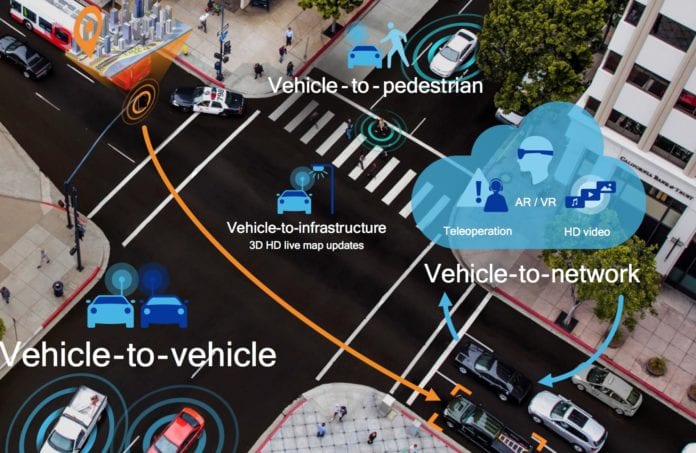Transportation officials pushback on shift away from DSRC, potential for unlicensed use
- In December, FCC passed notice of proposed rulemaking that would reallocated 75 megahertz of the 5.9 GHz band for C-V2X and unlicensed use.
- 45 megahertz would go for unlicensed uses like Wi-Fi; the upper 20 megahertz for C-V2X; the remaining 10 megahertz could keep supporting DSRC or also go to C-V2X
- On Jan. 10, four Congressmen expressed support for the shift, dinged DSRC for slow adoption
Following the Federal Communication Commission’s December decision to pursue reallocation of 75 megahertz in the 5.9 GHz band, public comments include support from Congress, criticism from amateur radio operators that use the frequencies in play, and pushback from transportation authorities.
FCC Chairman Aji Pai’s plan calls for dividing up the 75 megahertz as follows: the lower 45 megahertz would go for unlicensed uses like Wi-Fi, the upper 20 megahertz for C-V2X, and the remaining 10 megahertz would be the subject of public comment on whether it should remain for Dedicated Short-Range Communications or also go to C-V2X. It’s worth noting that the 45 megahertz that could go over to unlicensed use is adjacent to unlicensed spectrum in the 5.725 GHz to 5.850 GHz range.
A consummate talking point in this process has been that DSRC failed to live up to its potential, and that’s repeated in a Jan. 10 letter to Pai from four members of Congress: Representatives Jerry McNerney, Billy Long, Anna Eshoo and John Shimkus. The elected officials wrote, “We believe that it is time to revisit the allocation of this valuable spectrum to ensure it is being put to the most efficient use. The Commission’s proposal…will allow this spectrum to continue to be used for its original purpose while supporting the growing demand for Wi-Fi and 5G services across the nation.”
Countering the notion that DSRC has taken too long, Roger Wentz, president and CEO of the American Traffic Safety Services Association, pointed out in a letter to the FCC that “Although [5.9 GHz was] first allocated in October 1999, licensing and service rules were not issued until February 2004 and further amended in 2006. Furthermore, the FCC failed to require spectrum ‘owners’ to submit buildout plans which would have created clear guidelines for a path forward.”
The Colorado Department of Transportation pointed out to the FCC that it “has embarked on deploying one of the largest and most robust connected vehicle environments on many of the state’s most challenged roadways,” including via investments in both DSRC and C-V2X. “This has been a deliberate step by the state of Colorado to utilize and leverage [connected vehicle] applications on our roadways while remaining poised and flexible as competing technologies play out in the market.”
The state used millions in federal funding to, among other investments, deploy DSRC devices. “The C-V2X dedication is a welcome proposal, however, the effect this may have on existing DSRC deployments should be carefully considered. Transitioning of our existing DSRC assets to the proposed allocated bands will require significant effort, jeopardize our initial investment, and most importantly, halt the current safety improvements enabled by the CV data and infrastructure.”
For vehicular communications, C-V2X has been embraced by the telecom ecosystem as well as automotive manufacturers. Audio, BMW, Ford, Toyota and others automakers, along with dozens of global operators, have collaborated on C-V2X testing, which is also the subject of ongoing standardization work regarding an evolutionary path from LTE to 5G NR.

